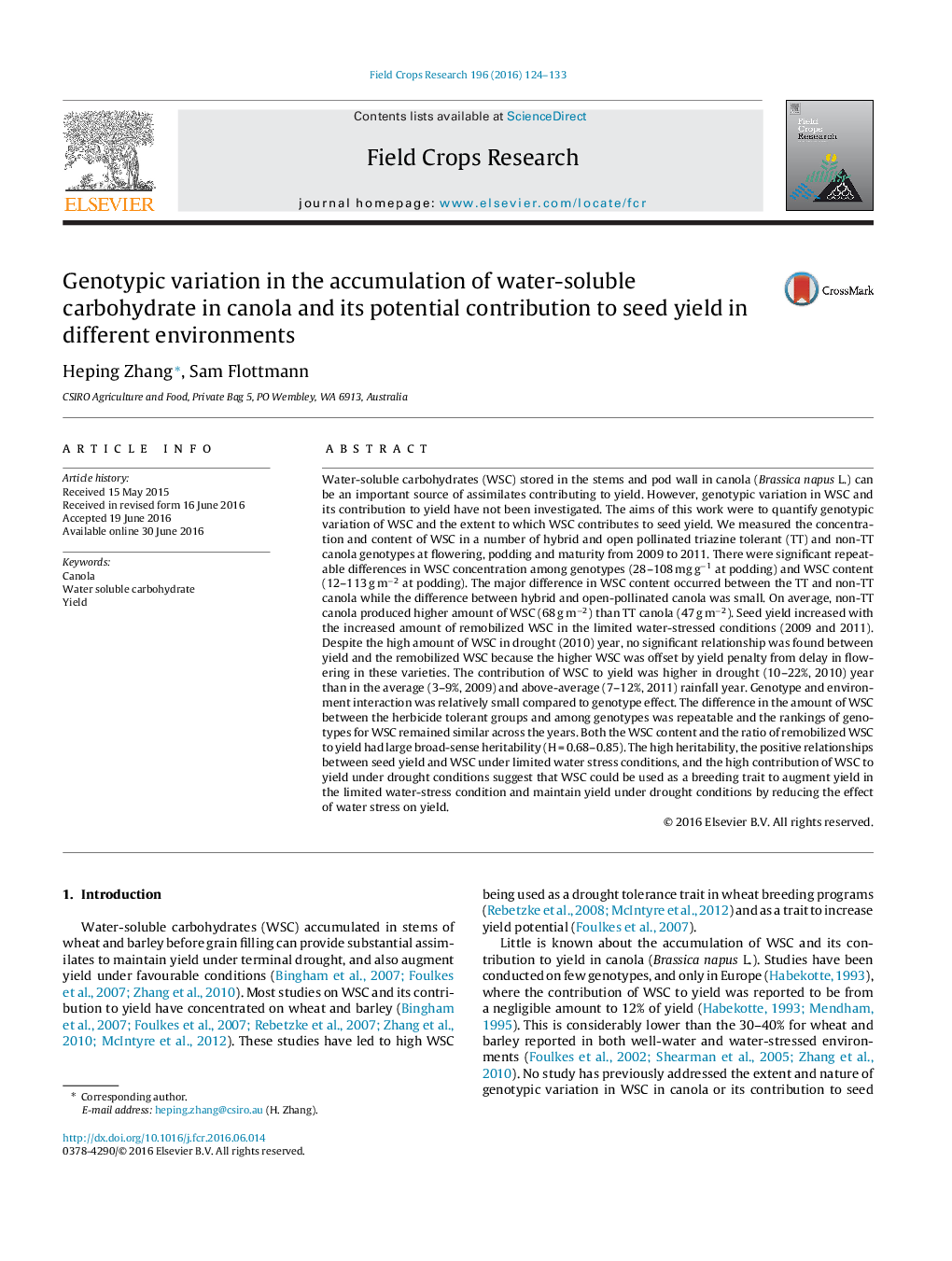| کد مقاله | کد نشریه | سال انتشار | مقاله انگلیسی | نسخه تمام متن |
|---|---|---|---|---|
| 6374515 | 1624667 | 2016 | 10 صفحه PDF | دانلود رایگان |
عنوان انگلیسی مقاله ISI
Genotypic variation in the accumulation of water-soluble carbohydrate in canola and its potential contribution to seed yield in different environments
ترجمه فارسی عنوان
تنوع ژنوتیپ در انباشت کربوهیدرات محلول در آب در کلزا و سهم بالقوه آن در عملکرد دانه در محیط های مختلف
دانلود مقاله + سفارش ترجمه
دانلود مقاله ISI انگلیسی
رایگان برای ایرانیان
کلمات کلیدی
کانولا، کربوهیدرات محلول در آب، بازده،
موضوعات مرتبط
علوم زیستی و بیوفناوری
علوم کشاورزی و بیولوژیک
علوم زراعت و اصلاح نباتات
چکیده انگلیسی
Water-soluble carbohydrates (WSC) stored in the stems and pod wall in canola (Brassica napus L.) can be an important source of assimilates contributing to yield. However, genotypic variation in WSC and its contribution to yield have not been investigated. The aims of this work were to quantify genotypic variation of WSC and the extent to which WSC contributes to seed yield. We measured the concentration and content of WSC in a number of hybrid and open pollinated triazine tolerant (TT) and non-TT canola genotypes at flowering, podding and maturity from 2009 to 2011. There were significant repeatable differences in WSC concentration among genotypes (28-108 mg gâ1 at podding) and WSC content (12-113 g mâ2 at podding). The major difference in WSC content occurred between the TT and non-TT canola while the difference between hybrid and open-pollinated canola was small. On average, non-TT canola produced higher amount of WSC (68 g mâ2) than TT canola (47 g mâ2). Seed yield increased with the increased amount of remobilized WSC in the limited water-stressed conditions (2009 and 2011). Despite the high amount of WSC in drought (2010) year, no significant relationship was found between yield and the remobilized WSC because the higher WSC was offset by yield penalty from delay in flowering in these varieties. The contribution of WSC to yield was higher in drought (10-22%, 2010) year than in the average (3-9%, 2009) and above-average (7-12%, 2011) rainfall year. Genotype and environment interaction was relatively small compared to genotype effect. The difference in the amount of WSC between the herbicide tolerant groups and among genotypes was repeatable and the rankings of genotypes for WSC remained similar across the years. Both the WSC content and the ratio of remobilized WSC to yield had large broad-sense heritability (H = 0.68-0.85). The high heritability, the positive relationships between seed yield and WSC under limited water stress conditions, and the high contribution of WSC to yield under drought conditions suggest that WSC could be used as a breeding trait to augment yield in the limited water-stress condition and maintain yield under drought conditions by reducing the effect of water stress on yield.
ناشر
Database: Elsevier - ScienceDirect (ساینس دایرکت)
Journal: Field Crops Research - Volume 196, September 2016, Pages 124-133
Journal: Field Crops Research - Volume 196, September 2016, Pages 124-133
نویسندگان
Heping Zhang, Sam Flottmann,
